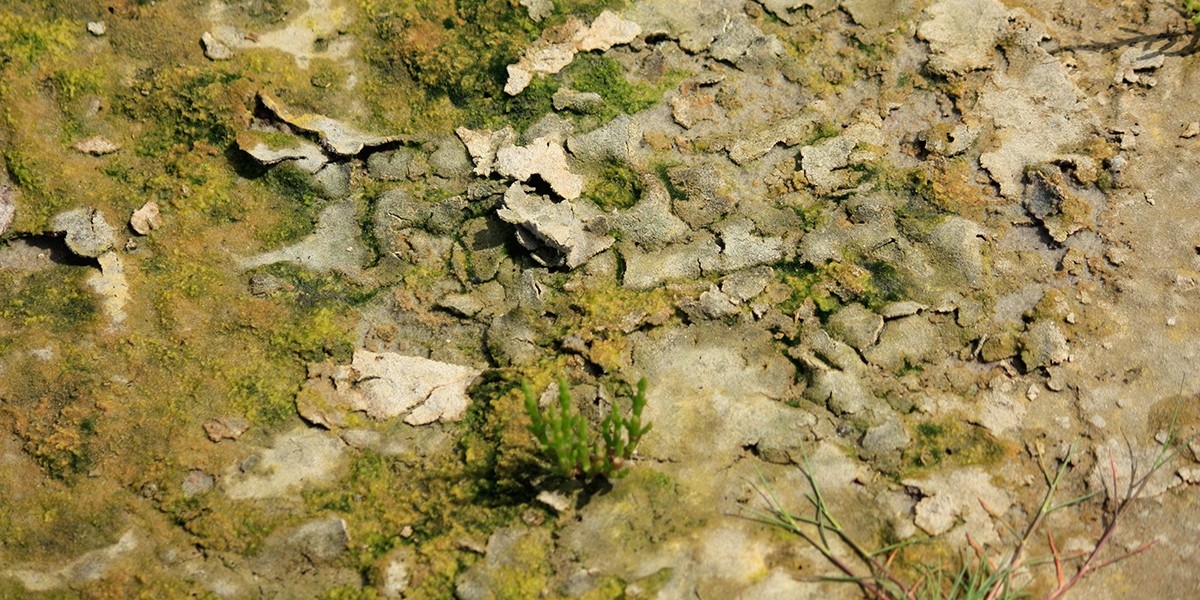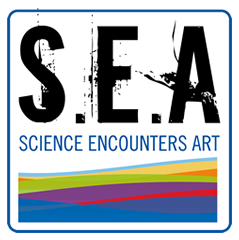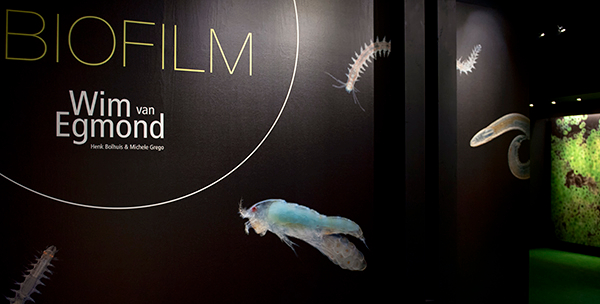Algen en bacteriën zoals je ze nooit zag
~~~for english scroll down~~~
Marien microbioloog dr. Henk Bolhuis en onderzoeksassistent Michele Grego doen onderzoek aan de groen-bruine, glibberige laagjes die delen van het strand en droogvallende wadplaten bedekken. ‘Dat zijn microbiële matten’, legt Bolhuis uit. ‘Ze bestaan uit een vlechtwerk van algen en bacteriën, dat soms zo sterk is dat je het echt als een stevige mat van de bodem kunt trekken.’
Zonnepaneeltjes van het wad
‘Cyanobacteriën en ook diatomeeën (een soort algen) zijn de zonnepaneeltjes van het wad. Overdag gebruiken ze de energie van het zonlicht om te groeien en om suikers aan te maken als reservevoedsel. Daar kunnen ze dan ’s nachts, dieper in de bodem op teren totdat de zon weer opkomt.’
DNA beweegt niet
‘Als microbioloog ben ik gewend om de algen en bacteriën die ik onderzoek vrijwel direct uit elkaar te trekken, bijvoorbeeld om naar hun DNA te kijken. Maar met filmer Wim van Egmond keken we op een heel andere manier naar de matten. Om de zoveel minuten maakte Wim een microscopische foto van het laagje, van boven of van de zijkant, om die vervolgens als een film aan elkaar te plakken. Zo kon hij de bewegingen van, zeg, een maand in een minuut samenvatten. Dan zie je ineens hoe verschillende microben in de nacht naar het oppervlak bewegen om aan zuurstof te kunnen komen. Ook zie je prachtig de gekleurde laagjes: groen van de cyano’s boven, daaronder paars van de bacteriën die zwavel kunnen omzetten en vervolgens zwart. Het DNA uit mijn traditionele onderzoek beweegt natuurlijk niet, dus door dit werk van Wim zijn Michele en ik echt geïnspireerd geraakt voor nieuw onderzoek. Kunst en wetenschap komen hier op een heel vruchtbare manier samen.’
Meer infomatie over het het onderzoek van Wim en Michele vind je hier.

Algae and bacteria as you’ve never seen them before
Marine microbiologist Dr Henk Bolhuis and research assistant Michele Grego study the slippery, greenish-brown layers that cover parts of the beach and exposed tidal flats. ‘These are microbial mats,’ explains Bolhuis. ‘They consist of a mesh of algae and bacteria that is sometimes so strong it really can be pulled away from the ground like a solid mat.’
Solar panels of the mudflats
‘Cyanobacteria and diatoms (a type of algae) are the solar panels of the mudflats. By day, they use the energy from sunlight to grow and to produce sugars as a food reserve. They use this to sustain themselves at night, deeper in the ground, until the sun comes up again.’
DNA doesn’t move
‘As a microbiologist, I normally pull apart the algae and bacteria I study almost immediately, for example to look at their DNA. But with film-maker Wim van Egmond we looked at the mats in a completely different way. Every few minutes Wim took a microscopic photo of the layer, from above or from the side, and then stuck the photos together like a film. In this way he was able to compress, say, a month’s worth of movements into a minute. Then you suddenly see how different microbes move to the surface at night to obtain oxygen. You also get a great view of the coloured layers: green from the cyanobacteria on top, below that purple from the bacteria that convert sulphur, and then black. The DNA from my traditional research doesn’t move of course, so Wim’s work has really given Michele and me inspiration for new research. Art and science come together here in a very productive way.’
More information about Henk and Michele’s work can be found here

SEA Art tour BIOFILM
By Wim van Egmond
For almost a year, micro-photographer Wim van Egmond worked with NIOZ researchers Michele Grego and Henk Bolhuis to create time-lapse films and microscopic images of life on and in the mudflats. The result is the BIOFILM exhibition, which reveals the hidden life of the mudflats. The world of microbes, single-celled organisms and micro-animals is hugely magnified. Read more...
